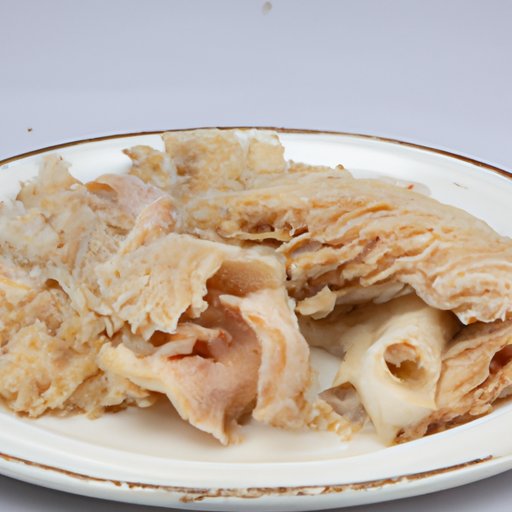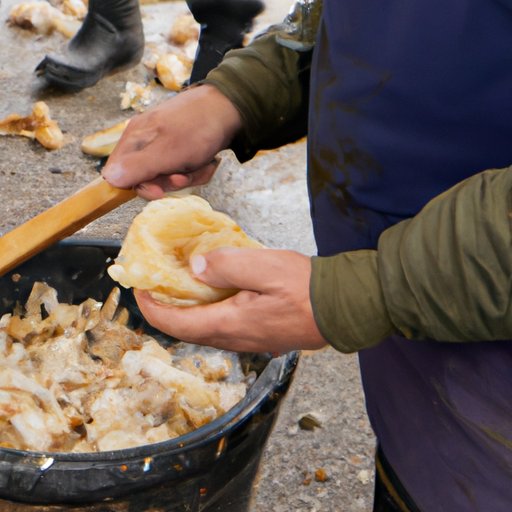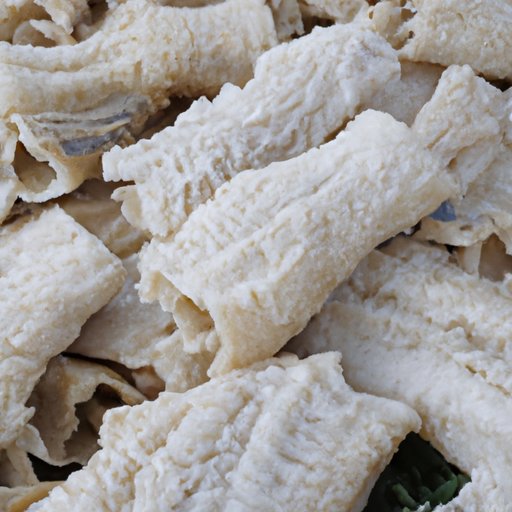Introduction
Tripe is a type of edible offal made from the stomach lining of animals such as cows, sheep, goats, and pigs. It has a long history of being used as a food source in many cultures around the world, and it’s known for its rich flavor and versatility of use. But is tripe good for you? In this article, we’ll explore the nutritional benefits and potential risks of eating tripe, as well as its traditional uses in different cultures and how it compares to other animal protein sources.

Exploring the Nutritional Benefits of Tripe
Tripe is a high-protein, low-fat food that’s packed with vitamins and minerals. According to the United States Department of Agriculture (USDA), one 3.5-ounce serving of cooked honeycomb tripe contains 20 grams of protein, 2.3 grams of fat, and 122 calories. It’s also an excellent source of B-complex vitamins, such as thiamin, riboflavin, niacin, and vitamin B12.
Examining the Pros and Cons of Eating Tripe
When considering whether or not tripe is good for you, it’s important to weigh the pros and cons of eating it. On the plus side, tripe is a nutrient-dense food that’s high in protein, vitamins, and minerals, and low in fat. It’s also incredibly versatile and can be used in a variety of dishes, from soups and stews to stir-fries and tacos. Plus, many people enjoy its rich flavor.
On the downside, tripe can cause digestive issues in some people. It’s also known for its unpleasant odor, which may be off-putting to some. Additionally, there is a risk of contamination due to bacteria and parasites that may be present in the animal’s stomach lining.

Investigating Traditional Uses of Tripe in Different Cultures
Tripe has been a part of the human diet for centuries, with different cultures using it in various ways. In Europe, tripe is often cooked with onions, garlic, and herbs and served as a stew or soup. In Asia, tripe is commonly used in hotpots and stir-fries. In North America, tripe is sometimes served as a breakfast dish.

Comparing the Health Benefits of Tripe to Other Animal Protein Sources
When comparing the health benefits of tripe to other animal protein sources, it’s important to consider the nutritional profile of each. Beef, for example, is higher in fat than tripe, with 7.3 grams of fat per 3.5-ounce serving. Pork is slightly lower in fat, with 5.7 grams of fat per 3.5-ounce serving. Fish is the lowest in fat, with 1.6 grams of fat per 3.5-ounce serving.
In terms of protein content, beef and pork are both higher in protein than tripe, with 28 grams of protein per 3.5-ounce serving. Fish is slightly lower in protein than tripe, with 19 grams of protein per 3.5-ounce serving.
Discussing the Potential Risks of Eating Tripe
As with any food, there are potential risks associated with eating tripe. One of the most common risks is digestive issues, such as bloating and gas. Tripe can also contain bacteria and parasites, which may lead to food poisoning if not properly cooked. Additionally, some people may have an allergic reaction to consuming tripe, so it’s important to speak to your doctor before adding it to your diet.
Conclusion
Tripe is a nutrient-dense food that’s high in protein, vitamins, and minerals and low in fat. It has a rich flavor and can be used in a variety of dishes. However, there are potential risks associated with eating tripe, such as digestive issues, risk of contamination, and allergies. When considering whether or not tripe is good for you, it’s important to weigh the pros and cons, as well as compare it to other animal protein sources.
More research is needed to understand the full nutritional benefits and potential risks of eating tripe. In the meantime, speaking to your doctor before adding it to your diet is recommended.
(Note: Is this article not meeting your expectations? Do you have knowledge or insights to share? Unlock new opportunities and expand your reach by joining our authors team. Click Registration to join us and share your expertise with our readers.)
